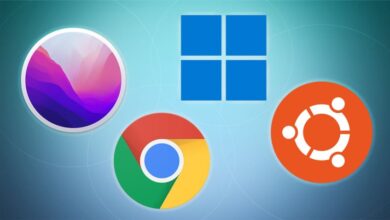Master Your Day With Top Productivity Tools

The modern workplace, whether a bustling office or a cozy home setup, has become overwhelmingly complex, requiring us to juggle dozens of tasks, manage sprawling projects, and constantly switch between different communication channels, all while trying to maintain a semblance of work-life balance.
This continuous juggling act, often referred to as “context switching,” is a silent killer of efficiency, rapidly draining our mental energy and leading to the feeling of working hard without making meaningful progress.
Thankfully, the digital revolution has gifted us with a dynamic arsenal of software solutions—known collectively as productivity applications—designed specifically to bring order to this digital chaos and help us work smarter, not harder.
These indispensable digital tools serve as our external brain, a personalized digital assistant that never forgets a deadline, tirelessly tracks every minute, and seamlessly organizes every fleeting thought into an actionable item.
They move beyond simple software; they embody entire methodologies that streamline workflows, automate repetitive and mundane tasks, and provide the clarity needed to prioritize truly impactful work over simple busywork.
By effectively integrating the right suite of productivity apps, we can dramatically reduce stress, improve the quality of our output, enhance collaboration with our teams, and ultimately reclaim precious time lost to inefficiency and poor organization.
Choosing the right tool for the job—whether it’s a dedicated task manager, a flexible note-taking workspace, or a powerful time tracker—is the first, most crucial step toward building a high-performance digital environment that propels you toward your personal and professional goals with consistent, focused effort.
The Four Pillars of Digital Productivity

Productivity applications generally fall into distinct categories, each addressing a specific need in your workflow. Mastering these different types is key to building a robust and integrated system.
1. Task Management and To-Do Lists
These applications are the essential backbone of any productive workflow, acting as the single source of truth for everything you need to accomplish. They transform the overwhelming “to-do” mental load into clear, discrete, and actionable steps.
Key Features to Look For:
A. Quick Capture: The ability to jot down a task in seconds, often using natural language input (e.g., “Email John tomorrow at 9 AM”).
B. Prioritization and Due Dates: Tools for assigning clear deadlines and prioritizing tasks using methods like the Eisenhower Matrix or simple drag-and-drop.
C. Project Organization: Features that allow you to group related tasks into projects, complete with milestones and clear objectives.
D. Recurring Tasks: Functionality to automatically generate tasks that happen repeatedly, such as weekly reports or monthly bill payments.
Top Contenders in This Space:
A. Todoist: Famous for its natural language processing and powerful filtering capabilities, it is highly effective for both personal and professional lists.
B. Asana: A powerhouse for team-based task and project management, offering multiple views like lists, boards, and timelines.
C. Trello: Uses the visual Kanban board system, which is excellent for visually tracking tasks through different stages (To Do, Doing, Done).
2. Digital Note-Taking and Knowledge Management
Note apps have evolved far beyond simple text editors; they are now dynamic workspaces used for capturing ideas, structuring knowledge, and even managing complex projects. They serve as your personal or team wiki.
Key Features to Look For:
A. Multi-Format Capture: Support for notes, images, audio clips, web clippings, and document attachments within the same workspace.
B. Powerful Search: The ability to quickly locate information, often searching within documents and images themselves, not just in the title.
C. Organization and Tagging: Flexible systems that allow you to organize content using folders, notebooks, tags, or internal links.
D. Cross-Platform Sync: Seamless availability of your notes across your phone, tablet, and desktop computer.
Top Contenders in This Space:
A. Notion: A highly versatile “all-in-one” workspace that brilliantly combines note-taking, project management, and databases into one platform.
B. Evernote: A long-time favorite known for its robust web clipping feature and superior ability to store and search massive amounts of information.
C. Google Keep: Excellent for quick, simple note-taking, color-coding, and setting location-based reminders for immediate, short-term ideas.
3. Time Management and Focus Enhancers
These tools help you gain critical insight into where your time is actually going and apply structured techniques to maximize focus and minimize distractions. They are essential for identifying and eliminating time-wasting activities.
Key Features to Look For:
A. Time Tracking: Simple start/stop timers that allow you to log time spent on specific tasks or projects accurately.
B. Activity Monitoring: Apps that run in the background to automatically report which applications and websites you spend the most time on.
C. Focus Timers: Built-in tools that implement popular techniques like the Pomodoro Technique (short bursts of focused work followed by breaks).
D. Distraction Blocking: Functionality that limits access to distracting websites or turns off non-essential notifications during designated work periods.
Top Contenders in This Space:
A. Toggl Track: One of the most straightforward and popular time tracking tools, excellent for freelancers and teams needing accurate billable hours.
B. RescueTime: An analytical tool that automatically monitors your computer and web usage to provide detailed reports on your productivity patterns.
C. Sunsama: Focuses on mindful planning, helping you time-block your day and be realistic about what you can actually achieve to maintain a healthy work-life balance.
4. Workflow Automation and Integration
The ultimate step in digital productivity is getting your apps to talk to each other, automating the repetitive, low-value tasks that clog up your day. These tools act as the glue between your entire suite of applications.
Key Features to Look For:
A. Trigger-Action Workflows: The ability to set up “If This, Then That” rules between different web services.
B. Integration Library: A vast collection of supported apps (e.g., Slack, Gmail, Trello, Calendar) that can be connected.
C. Automated Data Transfer: The capacity to automatically move information between systems, such as saving email attachments directly to a cloud drive.
D. Customizable Logic: Tools that allow for more complex multi-step workflows to handle detailed business processes.
Top Contenders in This Space:
A. Zapier: The market leader for building powerful, cross-platform automated workflows without needing to write any code.
B. IFTTT (If This Then That): A user-friendly platform focused on creating simple automation chains between apps and smart devices.
C. Microsoft Power Automate: Microsoft’s comprehensive solution, particularly powerful for integrating across the Microsoft 365 ecosystem.
The Power of AI in Productivity Tools
The arrival of sophisticated Artificial Intelligence (AI) has completely revolutionized the productivity landscape, transforming passive tools into proactive digital partners.
AI is rapidly becoming integrated into almost every category of productivity application.
How AI Boosts Your Efficiency
AI handles the “undifferentiated heavy lifting” of your knowledge work, freeing up your cognitive energy for creative problem-solving.
A. Automated Note Summarization: AI can listen to a meeting or analyze a long document and automatically generate a concise summary and a list of actionable items.
B. Task Consolidation from Communication: Tools use AI to scan incoming emails or chat messages and instantly create tasks in your to-do list based on detected commitments and deadlines.
C. Intelligent Scheduling: AI can analyze your past work patterns and calendar to suggest the optimal time to schedule deep work blocks or meetings.
D. Text Generation and Editing: Apps like ChatGPT can assist with drafting emails, rewriting notes for clarity, or generating outlines for reports, dramatically accelerating content creation.
E. Smart Search and Retrieval: AI goes beyond keyword matching to understand the context and intent of your search query, helping you find relevant knowledge faster than ever before.
Tips for Maximizing Your Productivity App Setup

Simply downloading an app isn’t enough; true digital productivity comes from thoughtful setup, consistent use, and continuous optimization.
A. Choose Tools for Interoperability
Your apps should work together seamlessly to create a unified system.
A. Prioritize Integrations: Select apps that offer strong, native connections with your primary communication, calendar, and storage platforms.
B. Avoid Duplication of Function: Assign each app a specific role (e.g., Todoist for actions, Notion for reference) to prevent the confusion of having the same task in two places.
C. Use Connector Tools: Leverage tools like Zapier to link apps that don’t natively integrate, creating powerful custom workflows.
B. Implement a Daily Planning Ritual
The best tools require a commitment to a consistent process.
A. Review Yesterday’s Progress: Start your day by reviewing what you accomplished and what tasks were missed.
B. Time-Block Your Calendar: Schedule your high-priority tasks into your calendar, allocating specific blocks of time for focused work.
C. Process Your Inbox and Capture: Dedicate a specific time each day to quickly empty your email and any fleeting thoughts into your task manager.
C. Minimize and Manage Distractions Ruthlessly
The most advanced app is useless if you’re constantly pulled away by alerts.
A. Disable Non-Essential Notifications: Turn off all notifications except for those from immediate communication tools like your phone or primary chat app.
B. Schedule Focus Blocks: Use your time management app to create blocks of uninterrupted time and activate a website blocker during these periods.
C. Use the “One Task” Principle: When using a tool, close all other unnecessary tabs and applications to maintain a singular focus on the task at hand.
D. Leverage Different Views for Clarity
Many modern project tools offer different ways to visualize the same data; use them!
A. Kanban View for Flow: Use board views (like Trello) to see the status of tasks moving through a sequential process (e.g., draft, review, published).
B. Calendar View for Deadlines: Use calendar integrations to visualize how tasks and projects fit into your daily and weekly schedule.
C. List View for Prioritization: Use simple list views when you need to quickly reorder, filter, and prioritize your actions based on urgency or importance.
Spotlight on All-in-One vs. Specialized Tools
A common debate in the productivity world is whether to choose one all-in-one platform or a suite of specialized, best-in-class tools. Both approaches have distinct advantages.
Specialized Tools (The Best-of-Breed Approach)
This approach selects the top-rated app for each specific function.
A. Advantages: You get the deepest features for each category, such as the most robust time tracking or the most flexible task filters.
B. Disadvantages: Requires more effort to integrate and switch between multiple apps, risking data fragmentation and context switching.
C. Best For: Individuals or small teams with highly specific, non-standard needs in different work areas (e.g., a time tracker with invoicing and a separate tool for mind mapping).
All-in-One Platforms (The Central Hub Approach)
This relies on one mega-tool to handle most or all of your productivity needs.
A. Advantages: Provides seamless integration because all data lives in one place, leading to a single source of truth and minimal friction between functions.
B. Disadvantages: Features for secondary functions (like time tracking or email integration) may be less powerful than specialized, dedicated apps.
C. Best For: Teams that prioritize a simple, unified workspace and need strong, consistent collaboration capabilities across all projects and notes.
The trend for most users is moving toward a hybrid approach: a central all-in-one hub (like Notion) for documentation and project management, integrated with a few specialized, high-impact tools (like a dedicated focus timer or a powerful email client). This balance maximizes both unification and specialized power.
Security and Privacy in Productivity Apps
As your productivity suite becomes the repository for your most sensitive notes and project plans, you must choose and use them with security in mind.
Essential Security Measures
Protecting your data should always be your highest priority.
A. Enable Two-Factor Authentication (2FA): Always activate 2FA on your core productivity accounts, which prevents unauthorized access even if your password is stolen.
B. Understand Data Encryption: Choose apps that explicitly state they use end-to-end encryption or at least encryption in transit and at rest for maximum data protection.
C. Review Data Privacy Policies: Be aware of how the company handles your data and whether they sell it or use it for marketing purposes.
D. Granular Access Control: For team tools, use permissions settings to ensure that only the right people have access to sensitive projects and confidential files.
E. Regular Backups: While cloud apps typically handle backups, know where your data lives and, if possible, maintain a redundant, local backup of critical information.
Final Thoughts on The Productivity Toolkit
Successfully managing the demands of the twenty-first century requires more than willpower.
The digital landscape necessitates that we adopt smart tools to augment our natural abilities.
Productivity applications are your essential partners in the fight against digital distraction.
The greatest benefit is not just doing more, but gaining clarity on what truly matters to you.
By automating the mundane, you free your mind for creative and strategic thinking.
A well-organized digital environment is the key to reducing stress and improving focus.
The best productivity system is always the one that you actually use consistently every day.
Embrace the hybrid approach by blending powerful specialized tools with central hubs for knowledge.
Your investment in learning and mastering these apps will yield exponential returns in time and efficiency.


